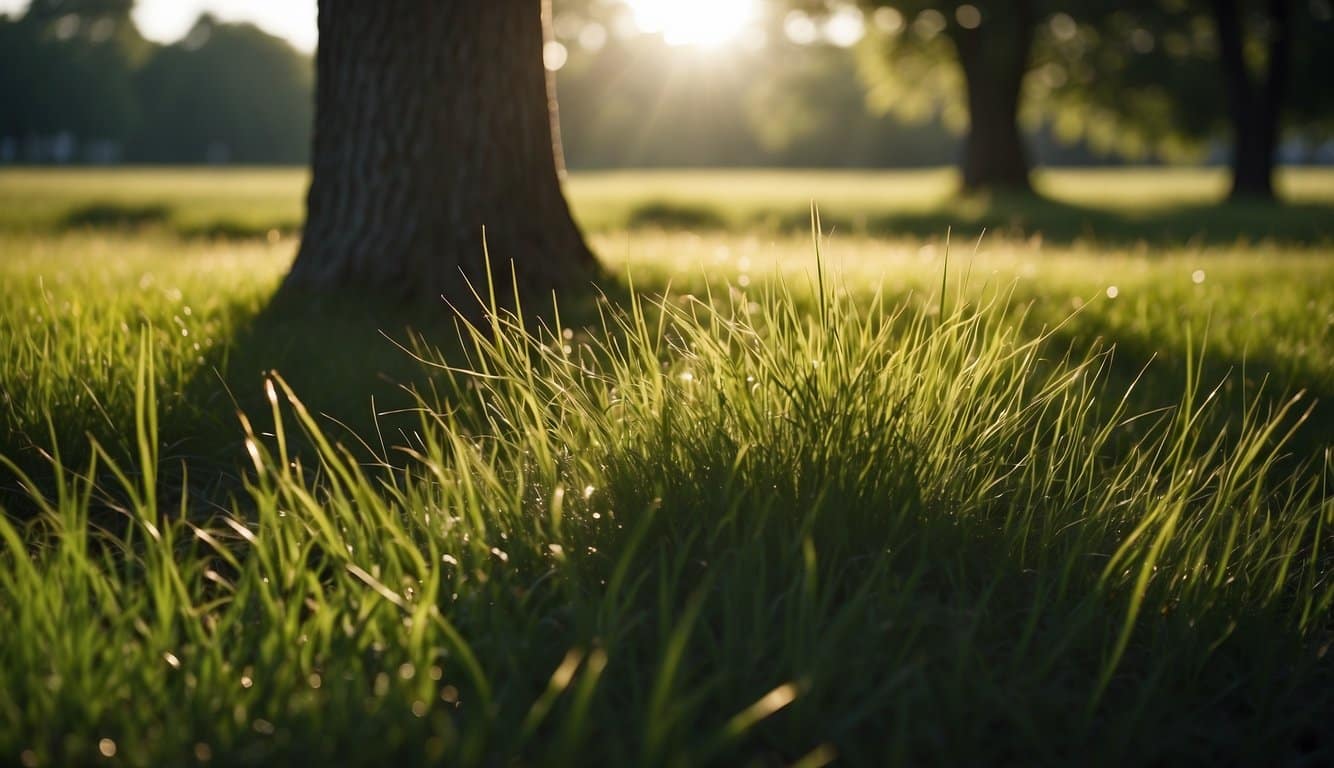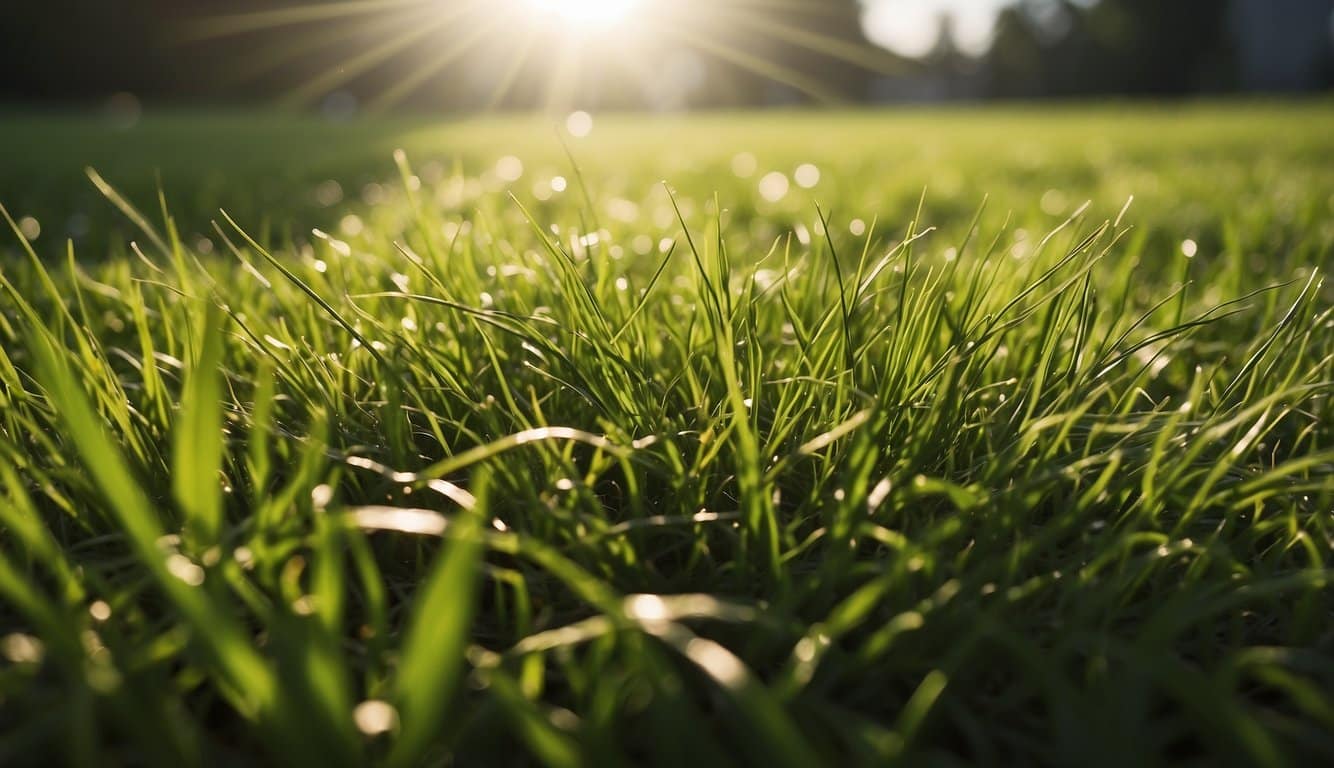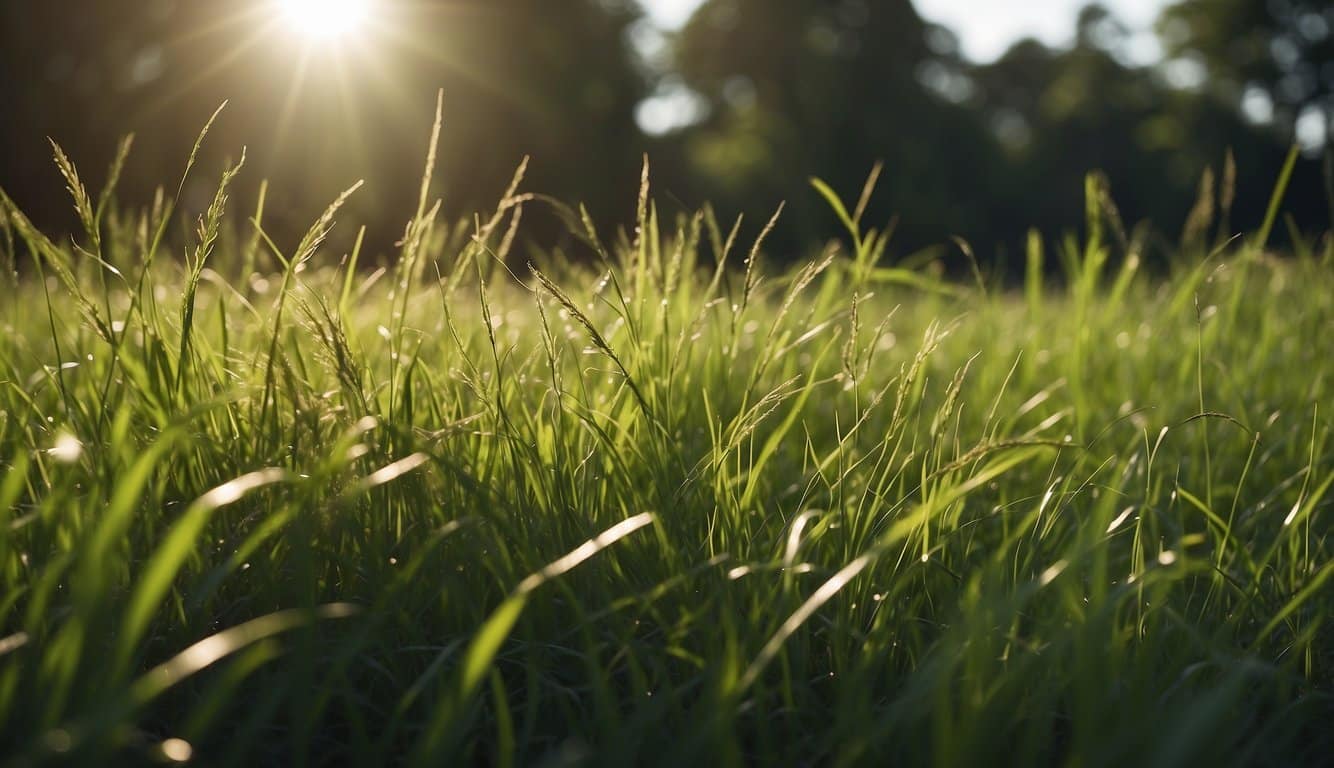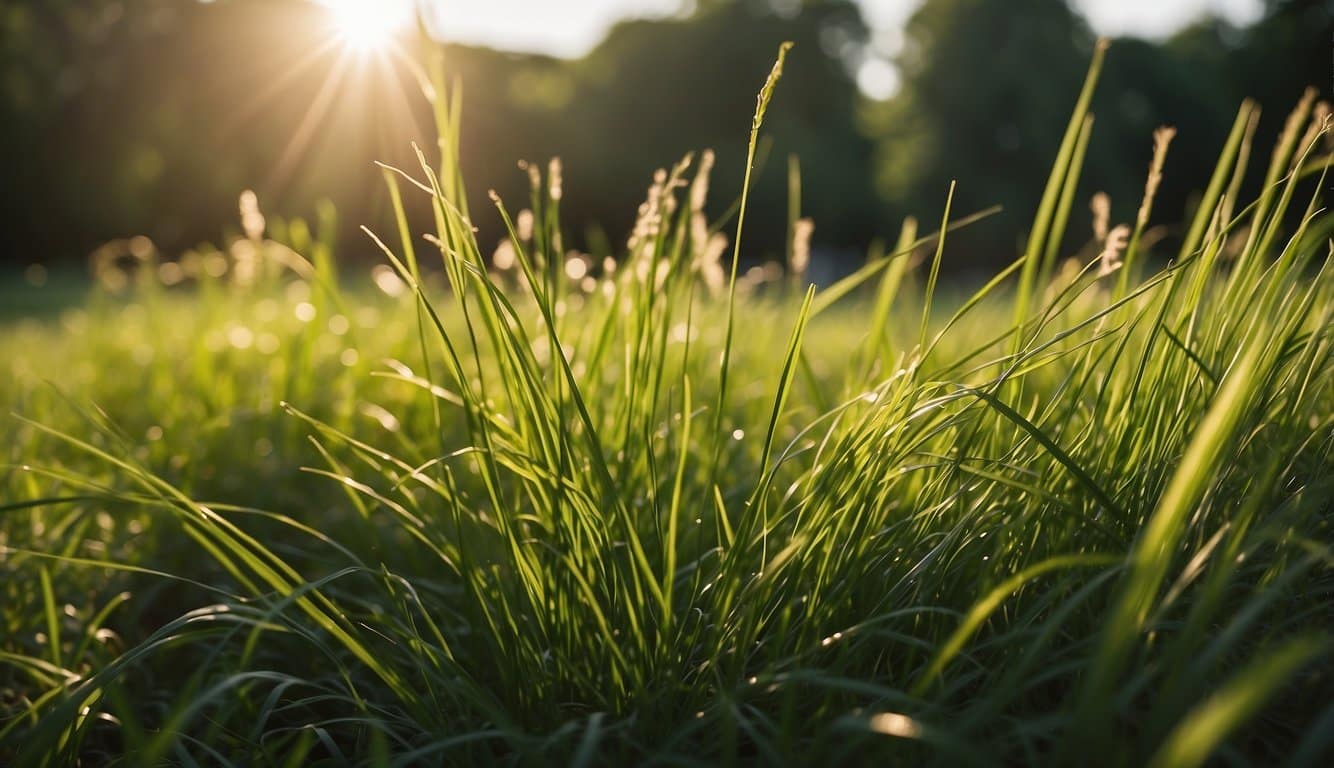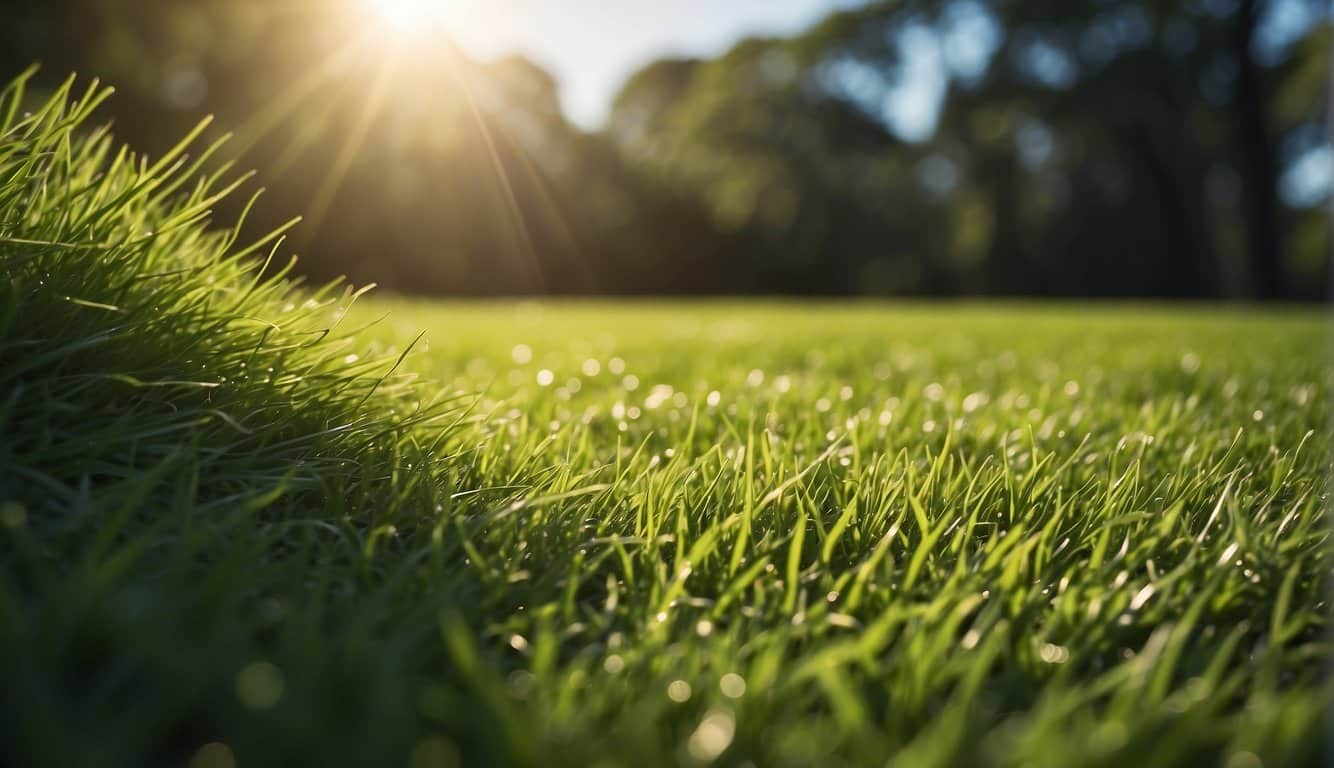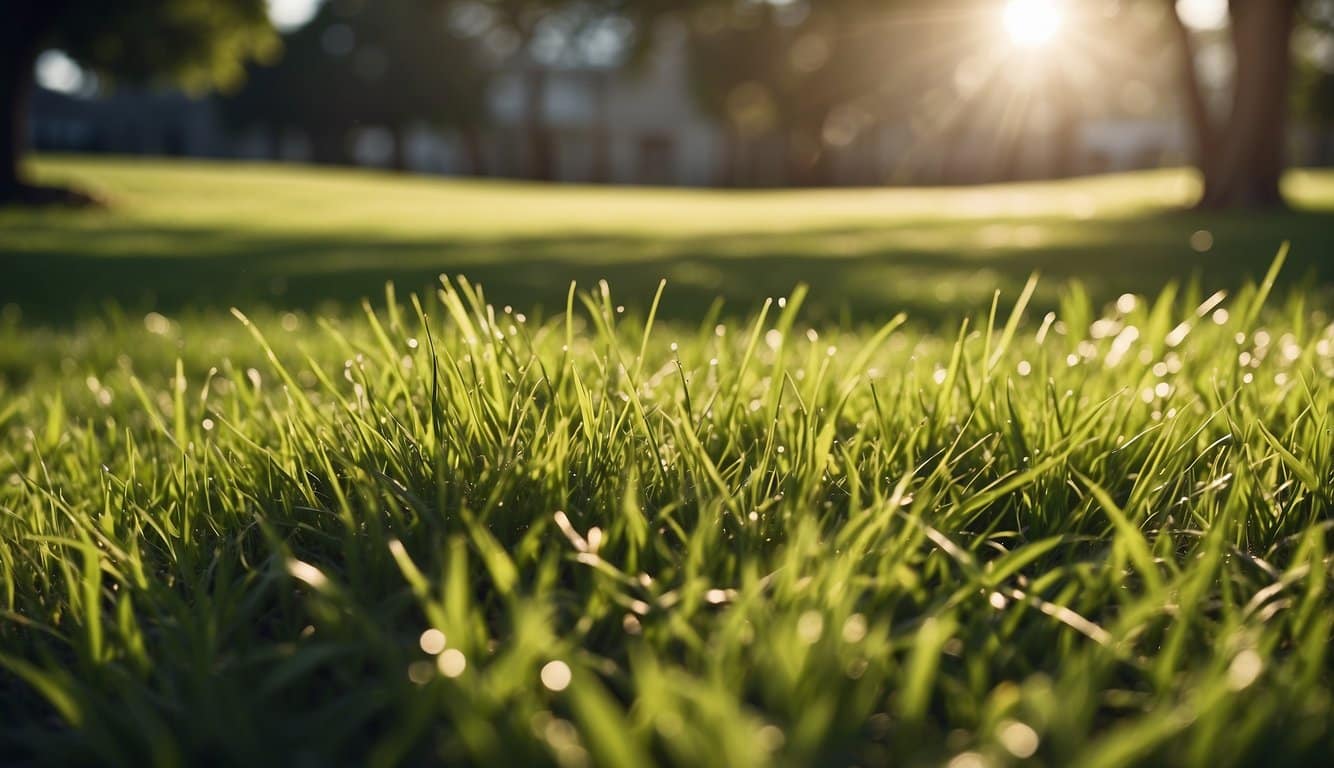Choosing the right grass seed for your lawn can be a challenging decision, particularly when faced with options like Scotts Sun and Shade and Tall Fescue.
Each grass type possesses unique characteristics, making them suitable for different environmental conditions and lawn care approaches.
Scotts Sun and Shade is a versatile mix that is designed to perform well in varied lighting conditions and includes a blend of seeds from fescue, rye, and bluegrass varieties.
It is known for its quick germination time, typically between 5 to 10 days, which is beneficial for those looking to establish their lawn rapidly.
On the other hand, Tall Fescue is a singular grass type that features a deeper root system and is known for its durability and ability to thrive in a range of soils, including those that are less fertile.
With a germination timeline of 6-14 days, it is slightly slower to establish than the mixed varieties found in Sun and Shade.
When considering which seed to use, factors like climate, soil type, and the expected traffic on the lawn play a significant role in determining the ideal choice.
Key Takeaways
- Sun and Shade is a quick-germinating mix suited for varied light conditions, while Tall Fescue is durable and adaptable.
- Selection depends on individual lawn conditions, including climate, soil, and usage.
- Proper understanding of each type’s features helps homeowners make informed lawn care decisions.
Scotts Sun and Shade Overview
Scotts Sun and Shade is designed to offer a versatile grass seed mix that can thrive in a range of light conditions, from full sun to dense shade.
Grass Composition
Scotts Sun and Shade contains a blend of several grass species that are chosen for their resilience and adaptability. This mix typically includes:
- Fine Fescues: Known for shade tolerance
- Perennial Ryegrass: Ensures quick germination and growth
- Kentucky Bluegrass: Offers lush green color and durability
Each type of grass contributes to a lawn that can withstand different environmental conditions, maintaining a healthy appearance throughout various seasons.
Ideal Growing Conditions
The ideal growing conditions for Scotts Sun and Shade reflect its adaptable nature. This mix performs best when:
- Temperatures are within the 50-60°F range, which is optimal for most of the seeds in the mix.
- Moisture is consistent; Scotts’ exclusive WaterSmart® PLUS coating helps seeds retain water, ensuring better germination and establishment.
- Soil is well-draining yet able to maintain the necessary moisture levels.
With proper care, Scotts Sun and Shade can deliver results even in extreme conditions, establishing a robust lawn that can handle both sunny and shaded areas effectively.
Tall Fescue Overview
Tall fescue is a popular cool-season grass, known for its durability and ability to thrive in a variety of conditions. It’s a top choice for lawns that require minimal maintenance yet seek a robust turf.
Key Characteristics
- Growth Time: Typically, tall fescue takes 6-14 days to germinate.
- Appearance: The blades are known for their fine texture and deep green color.
- Maintenance: Low maintenance, it has good shade tolerance and requires less watering compared to some other species.
- Durability: Displays excellent resistance to wear and tear, making it suitable for high-traffic areas.
Climate Adaptability
- Temperature Range: Germinates best between 60°F and 65°F (15-18°C) but can withstand higher temperatures up to 80°F (27°C) before growth ceases.
- Cold Tolerance: Possesses a moderate tolerance to cold, but can struggle in regions with extremely low winter temperatures.
- Drought Resistance: Tall fescue is fairly drought-tolerant, thanks to its deep root system that reaches moisture in the soil profile.
- Shade Tolerance: While it prefers sun, it can also perform reasonably well in shaded conditions compared to other cool-season grasses.
Comparative Analysis
In selecting the best grass seed for one’s lawn, it’s critical to consider how certain varieties perform under various conditions like shade tolerance, drought resistance, and maintenance needs.
These factors play pivotal roles in determining whether Scotts Tall Fescue or the Sun and Shade mix will thrive in a given environment.
Shade Tolerance
Scotts Sun and Shade mix, comprising a blend of grass seeds such as fescue, ryegrass, and bluegrass, is formulated for areas with varying light conditions.
It is known to perform well even in heavily shaded areas, primarily due to the inclusion of fine fescues like creeping red and chewings fescue.
On the other hand, Tall Fescue can tolerate moderate shade but may not perform as well as the Sun and Shade mix in dense shade.
Drought Resistance
When it comes to drought resistance, Tall Fescue has deep roots that enable it to access moisture from deeper in the soil, thus offering it an edge in water efficiency.
Conversely, the Sun and Shade mix has moderate drought tolerance; while it can handle dry periods, it might require more frequent watering during prolonged droughts to maintain its health and appearance.
Maintenance Requirements
The maintenance needs of these grass types are influenced by their inherent characteristics.
Tall Fescue generally requires less frequent mowing due to its growth habit; however, it may be less tolerant to heavy foot traffic, with a limited ability to recover from wear and damage.
The Sun and Shade mix might need more regular mowing, but its blend of seeds allows for better resilience against physical stress, making it a suitable option for areas with higher foot traffic or play.
Best Practices
Choosing the right seed mix for one’s lawn is a critical decision. Each mix has its own set of application methods and watering needs to achieve optimal growth and resilience.
Careful consideration of these guidelines ensures a lush, healthy lawn.
Application Recommendations
For Scotts Tall Fescue:
- Sowing should be done in early fall or spring when soil temperature is between 60°F and 70°F.
- Ideal application rate is approximately 6 to 8 pounds per 1,000 square feet for a new lawn.
For Scotts Sun and Shade:
- This mix can be applied in varied climatic conditions as it’s tolerant of both sunny and shaded areas.
- Suggest using 3 to 4 pounds per 1,000 square feet for grass rejuvenation.
Watering Guidelines
Tall Fescue requires:
- Deep and infrequent watering—about 1 to 1.5 inches per week.
- Keeping soil consistently moist during germination and less frequent, but heavier watering once established.
Sun and Shade Mix needs:
- Light and frequent watering sessions initially to prevent washing away seeds.
- Stepping down to 1 inch of water per week once grass begins to establish.
Frequently Asked Questions
In selecting the appropriate grass seed mix for a lawn, it’s essential to understand the differences and capabilities of each type. Here are some common questions to guide gardeners and homeowners.
What are the differences between Scott’s Sun and Shade Mix and Tall Fescue in terms of growth habits?
Scott’s Sun and Shade Mix typically germinates within 5 to 10 days, whereas Tall Fescue takes between 6 to 14 days to grow.
Growth time is a vital factor to consider depending on the urgency of lawn establishment.
Can Tall Fescue and Scott’s Sun and Shade Mix be mixed together effectively for lawn coverage?
They can be mixed to tailor to specific lawn conditions. Combining Tall Fescue with varieties from Scott’s Sun and Shade Mix can enhance shade tolerance and adaptability.
How does the tolerance to extreme weather conditions compare between Tall Fescue and Scott’s Sun and Shade Mix?
Tall Fescue generally tolerates high temperatures, as long as they don’t exceed 80°F. Meanwhile, most ryegrass seeds in the Sun and Shade Mix prefer cooler temperatures in the range of 50-60°F, offering versatility across different climates.
What is the ideal environment for the establishment and growth of Scott’s Sun and Shade Mix?
The Sun and Shade Mix is designed for broader environmental adaptability, growing best in temperatures between 50 and 60°F. It is suitable for varied lawn areas, from full sun exposure to shaded patches.
How does the water requirement of Scott’s Sun and Shade Mix differ from that of Tall Fescue?
Tall Fescue requires consistent moisture for optimal growth and can generally withstand dry spells. In contrast, Scott’s Sun and Shade Mix demands regular watering but also includes varieties that can survive occasional drought conditions.
What are the primary grass varieties included in Scott’s Sun and Shade Mix?
The mix contains a blend of fescue along with rye and bluegrass species.
This ensures a dense and resilient turf that can thrive in various light conditions.
